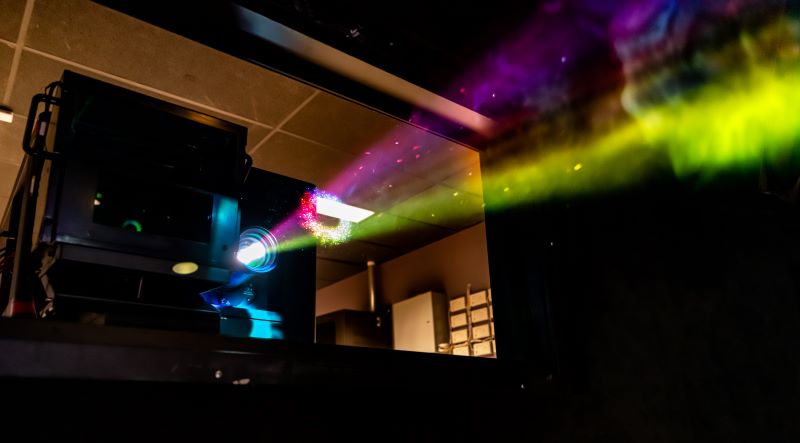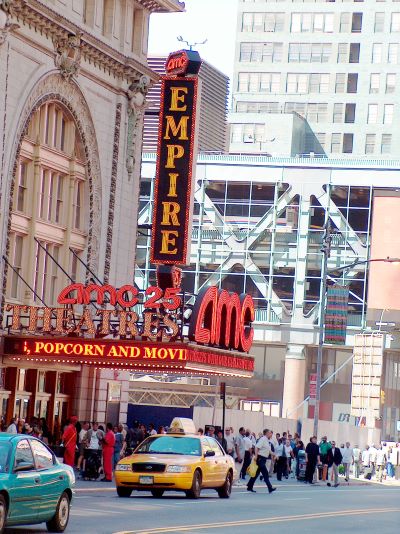
Movie theater chain AMC Theatres will charge premium prices for seats with best view of screens, taking from the live concerts and airlines playbooks that charge more for better-placed locations. Concert and airlines are under fire from dissatisfied consumers, so it’s a head scratcher, other than the AMC variable pricing will certainly be geared for more revenue.
Online reaction from consumers is mostly negative. Other exhibitors will probably wait-and-see how AMC fares before deciding whether to follow.
The deal is: Tickets at the center of auditoriums will have higher prices. Meanwhile, locations along the side with neck-craning angles will be less expensive. Close-to-the-screen seats are cheaper The premium price is waived for paying members of AMC Stubs, the circuit’s loyalty program.

The AMC initiative is dubbed “Sightline at AMC” and is implemented immediately at some locations, and will expand system wide by end of 2023. Sightline applies to peak shows after 4 p.m., except on the chain’s Tuesday discount days. There are three tiers: Value Sightline, Standard Sightline, and Preferred Sightline sections.
It’s not clear how seating will be enforced if patrons move around to vacant seats; enforcement would seem to be labor-intensive.
“While every seat at AMC delivers an amazing movie-going experience, we know there are some moviegoers who prioritize their specific seat and others who prioritize value moviegoing,” Eliot Hamlisch, EVP and CMO, AMC Theatres, said in a press announcement. “Sightline at AMC accommodates both sentiments.”
The Leawood, Kansas-based theater parent AMC Entertainment Holdings is the nation’s largest theater chain with 589 locations and 7,850 screens in the United States (and additional cinemas internationally).
Here are some thoughts. AMC seems to confuse its business with live events, some of which have astonishingly high ticket prices. Tickets for a Bruce Springsteen concert tour have a top-price of $4,000, despite an outcry for fans. The trouble for cinemas is they don’t have Bruce in the flesh.
Exhibitors risk killing off demand because there is a low ceiling for what audiences will pay for recorded entertainment, particularly when moviegoers know the same movies will be splashed across their TV and video screens in a matter of weeks. But whatever happens, Hollywood film distributors benefit because they take a percentage of ticket revenue. So if prices go up, film distributors get more money.

Charging tiered or dynamic pricing isn’t new and exhibitors have attempted on a limited basis in the past (note that AMC promises to implement system-wide by the end of the year). For example, the Disney-owned El Capitan Theatre landmark in Hollywood introduced a roped-off, premium-priced VIP Section years ago. “I don’t recall ever seeing anyone sitting in there,” says one patron. And tiers ends the simplicity of pricing that clearly appeals to consumers, as the booming success of Netflix can attest. The Sightline initiative adds complexity, which is an annoyance.
AMC is roiled by a series of events both negative and positive. These include crushing corporate debt, the hangover of the Covid closures, a runup of its stock price briefly by small investors dubbed “apes,” preparing to introduce its own popcorn brand to grocery stores, and spending precious corporate cash on a gold/silver mining investment. AMC is making investments to upgrade facilities, particularly movie projection, so perhaps that will help justify Sightline surcharges.
On negative consumer reaction, one poster sneered in a reference to the overpriced music concert business: “AMC should also start selling tickets through Ticketmaster. I can’t wait to start paying 25% upcharges on my ticket.”
Leave a Reply